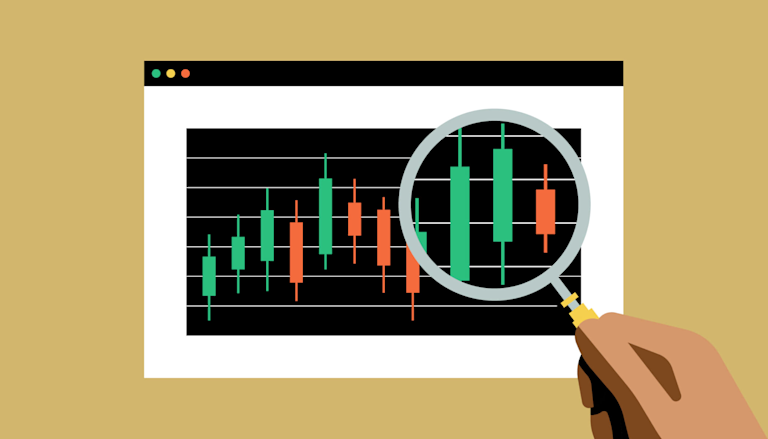
In the fast-paced world of cryptocurrency trading, understanding market trends and making informed decisions is crucial for success. One of the key tools that traders utilize to analyze price movements and forecast potential market shifts are trading indicators. These indicators provide various insights into market dynamics and help traders make better-informed trades. In this article, we’ll delve into the significance of trading crypto indicators and examine some of the most commonly used ones. For those eager to broaden their understanding of financial instruments, Trading Crypto Indicators click here to explore additional resources.
Why Use Trading Indicators?
Trading indicators are vital for various reasons. They can help traders identify trends, measure volatility, determine market momentum, and signal potential entry and exit points for trades. For instance, in a market as volatile as cryptocurrencies, having access to precise data can make a significant difference. Indicators can provide a clearer picture of price movements, enabling traders to formulate strategies and make decisions based on statistical analysis rather than emotional impulse.
Additionally, there are countless trading indicators available, each serving a unique purpose. Traders often customize their approach by selecting specific indicators that align with their trading style, risk tolerance, and market conditions.
Types of Trading Crypto Indicators
There are several categories of trading indicators, with the most popular being:
1. **Trend Indicators**: These indicators help traders identify which direction the market is moving. Common trend indicators include Moving Averages (MA), Average Directional Index (ADX), and Moving Average Convergence Divergence (MACD).
– **Moving Averages (MA)**: This indicator smooths out price data to identify the direction of the trend over a specific period. Short-term MAs can indicate emerging trends, while long-term MAs offer insights into the prevailing direction of the market.
– **MACD**: This is a momentum indicator that reveals changes in the strength, direction, and duration of a trend. It consists of two moving averages and offers signals based on crossovers and divergences.
2. **Momentum Indicators**: These indicators assess the speed of price movement. Notable momentum indicators include Relative Strength Index (RSI) and Stochastic Oscillator.
– **RSI**: This tool measures the recent performance of an asset to determine whether it is overbought or oversold. It ranges from 0 to 100, with readings above 70 indicating overbought conditions and below 30 suggesting oversold conditions.

– **Stochastic Oscillator**: This indicator measures a market’s closing price in relation to its price range over a specific period. It operates on a scale from 0 to 100, with readings above 80 suggesting overbought conditions and below 20 indicating oversold conditions.
3. **Volatility Indicators**: Volatility indicators assess the degree of price fluctuation over time. Examples include Bollinger Bands and Average True Range (ATR).
– **Bollinger Bands**: These consist of a simple moving average and two standard deviation lines. When prices are volatile, the bands widen; conversely, they contract during calmer market conditions.
– **ATR**: This measures the market’s volatility by examining the range between the high and low prices. A higher ATR indicates increased volatility, while a lower ATR suggests stability.
4. **Volume Indicators**: Volume plays a crucial role in confirming price trends. Indicators like On-Balance Volume (OBV) and Volume Oscillator help traders understand market strength.
– **OBV**: This indicator accumulates volume increases and decreases to provide insights into the buying and selling pressure. It helps traders determine if price movements are supported by volume, which adds credibility to trends.
– **Volume Oscillator**: This compares two moving averages of volume, giving insights into trends and potential reversals.
Choosing the Right Indicators
Selecting trading indicators is a personal decision that should align with your trading strategy and overall market perspective. Here are a few tips to consider:
1. **Understand Your Trading Style**: Are you a day trader, swing trader, or long-term investor? Different styles may necessitate different indicators. Day traders may benefit from short-term indicators like MAs, while long-term investors might rely on trend-following indicators.
2. **Combine Indicators Wisely**: Using a combination of different types of indicators can provide a more comprehensive market view. For example, pairing trend and momentum indicators can help confirm signals, while integrating volatility measures can inform risk management.

3. **Backtest**: Before committing to an indicator within your trading strategy, consider backtesting. This process involves analyzing how the indicator would have performed in past market conditions. It can provide insights and improve your confidence in its predictive power.
4. **Stay Updated with Market Conditions**: The dynamic nature of the crypto market means that optimal indicators may evolve. Stay informed about market news, technological advancements, and regulatory changes that could impact your trading choices.
Common Mistakes to Avoid
While using trading indicators, many traders make common mistakes that can adversely affect their trading outcomes. Here are some pitfalls to avoid:
1. **Over-Reliance on Indicators**: It’s essential to remember that indicators are tools, not infallible predictors. Do not base your trades solely on one indicator; approach the market with a broader perspective.
2. **Neglecting Market News**: While technical indicators provide valuable insights, market sentiment can shift due to news events or regulatory changes. Always incorporate fundamental analysis into your approach.
3. **Using Too Many Indicators**: While combining indicators can be helpful, overcomplicating your strategy with too many elements can lead to confusion and mixed signals. Keep your approach simple and focused.
4. **Ignoring Risk Management**: Regardless of how reliable your indicators seem, always practice effective risk management. Establish stop-loss orders, manage your portfolio wisely, and diversify your investments.
Conclusion
Navigating the cryptocurrency market requires skill, intuition, and access to the right tools. Trading crypto indicators serve as essential resources to analyze price movements, identify trends, and enhance overall trading strategies. By understanding different types of indicators and how to incorporate them into your trading routine, you can improve your potential for success in this volatile market.
Whether you are just starting or looking to refine your trading strategy, grasping the significance of trading indicators is vital for making informed decisions. As the crypto landscape continues to evolve, staying informed and adaptable will be key to thriving as a trader in this exciting digital frontier.
Bereikbaar via
- Braillestraat 133846 CP Harderwijk
- 0341 42 90 59
- 0341 42 90 68
- info@amitech.nl
- Direct uw vraag stellen
